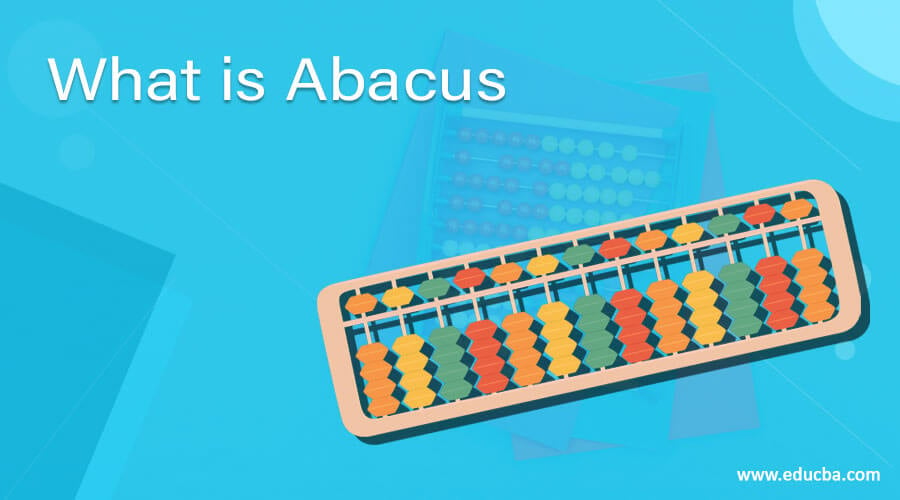Updated March 31, 2023

Introduction to Abacus
An abacus is a mechanical unit, which is often called a counting board, which is used to rapidly measure numerical equations. It was first invented thousands of years to do arithmetic calculations and is still commonly used in brain growth programs. The name was taken from the Latin expression â âabaxâ or â baconâ. It consists of a rectangular structure, on which the beads travel up and down vertically arranged rods. An abacus’ key goal is to improve children’s brainpower. An abacus does not carry out calculations alone, it lets users measure what has been taken into account.
Why we use Abacus?
It was accurate enough to do arithmetical calculations in ancient times, where there were no calculators, calculators, or types and records for calculations. In comparison, people used to weigh their toes and their digits or stones in dirt. These techniques were not sufficient for long calculations and so it was used at the time.
Functions of Abacus
The motor nerves and sensory nerves of our bodies carry the input from the bodies into the mind and likewise. A human head operates using sense organs. A brain takes organ input; hence the beads are arranged in that manner. The nerve endings get stimulated as the kids regulate it with their fingertips, and all the cells in the brain are stimulated. The cells on the right side of the brain are stimulated while the left hand is used. The left cells of the brain are stimulated when the right hand is applied. The operation of the left brain interprets and the right brain activity visualizes. The left and right sides of the brain are also now functioning together and helping to grow the whole brain.
History
The word “abacus” is a solid arithmetical instrument that was introduced between 300 and 500 BC. The word abacus derives from the Latin word “abax.” Or “abakon”. It passed through multiple countries at the time of its invention. The Suanpan was one of a new Chinese abacus, with 2/5 decks but a little harder; it was replaced by a Soroban, a Japanese, strengthened by the famous Seki Kowa mathematician. For making the abacus to 1/4 decks, Seki Kowa took one bead from the top and bottom decks. The abacus of Soroban is actually used. After globalization, it became commonplace because there was intensive global rivalry on a single forum. Education in various countries has also been affected. It strengthens the general comprehension of arithmetic and also increases the solution of problems and faster calculating skills.
Types of Abacus
Here are the following types mentioned below.
- Line Abacus: It became a ruling board of steep stems on lines over time. In India, Egypt, Greece, and Rome, and other very ancient cultures it is used extensively. Salamis is a common example of the abacus line, preserved in the Athens Museum. It comprises a white marble panel with drawn lines.
- Dust Abacus: It is commonly used to measure in the shape of board coated in fine sand or dust. The sand has been divided into lines that define a different number of locations in both lines. For many marks drawn with a line, the numbers and amounts were determined. This form of the initial calculator may have been used by the civilization of Mesopotamia.
- Ancient Chinese Abacus: In both the construction and the method of measurement it was very similar to the old grooved abacus. The following picture depicts a book that presumed the early Chinese abacus. This book was called Mathematical Treatises, which Hsu Yo wrote about 1700 years ago and Chen Luan wrote about 300 years ago.
- Grooved Abacus: In addition to the abacus rows, Romans was an extremely sophisticated layout. There was a tracker in each of the upper wilderness and four counts in the lower wilderness. In addition, some of the other counters have been added with the right to simplify the measurement of fractions.
Advantages
- Various well-known doctors have been investigated the left hemisphere of the brain known as a digital brain, which supplies analysis and governs measurement, critical reasoning, reading, writing, and more.
- It supports dyslexic children with poor orthodoxy, reading, and writing expertise. As dyslexic children should appreciate, this enhances their numerical ability.
- The advances in mathematical conditions are not only helpful, but they also help raise the overall academic level.
- It provides confidence in the subject based on estimates since it encourages math.
Recommended Articles
This is a guide to What is Abacus Here we discuss Why we use the abacus along with its Uses, Types, Functions, History, and advantages. You can also look at the following article to learn more –

